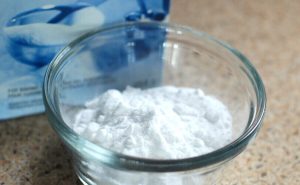Exercises Optimal for Hot Flashes
This query needs a universally applicable solution, as the optimal exercise regimen for heat flashes is subjective and contingent upon the individual. Nevertheless, the following exercises have been demonstrated to be beneficial in managing heat flashes:
Reducing Hot Flashes
Brisk walking, swimming, or cycling are examples of aerobic activities that can regulate temperature and reduce heat flushes.
When selecting an aerobic exercise, it is essential to locate one that complements your fitness level and that you appreciate. Commence your exercise regimen gradually and progressively escalate the duration and intensity as you become more proficient. Additionally, it is vital to remain hydrated and wear loose-fitting apparel during exercise.
Aerobic activity is feasible for the majority of the week. Most days of the week, strive to complete at least 30 minutes of aerobic exercise at a moderate intensity. Additionally, shorter bursts of vigorous-intensity aerobic exercise are possible.
The following is supplementary evidence from scientific studies regarding aerobic exercise and hot flashes:
Women who engaged in aerobic exercise for 30 minutes four days per week experienced a significant reduction in heat flashes, according to a study published in the journal Menopause, compared to women who did not exercise.
After 12 weeks, women who engaged in aerobic exercise for 60 minutes, three days per week, experienced a 40% reduction in heat flashes, according to another study published in the journal Climacteric.
According to a review of studies published in Maturitas, aerobic exercise can effectively enhance the quality of life and alleviate heat flashes in postmenopausal women.
Aerobic exercise is a safe and effective method for reducing the frequency and intensity of heat flashes. Consult your physician regarding the form and quantity of exercise most beneficial for you.
Strength training can aid in developing muscle mass, which can assist in calorie expenditure and body temperature regulation. Aim for two to three sessions per week of strength training.
By strengthening the body, one can reduce heat flashes. Muscle mass development is beneficial because it aids in calorie expenditure and body temperature regulation. Strength training can alleviate tension, which may contribute to the onset of hot flushes.
Obtaining an adequate amount of sleep may assist in mitigating heat flashes.
According to a study published in the journal Menopause, women who performed strength training for 30 minutes on two occasions per week encountered a notable decrease in hot flashes compared to those who maintained a sedentary lifestyle.
Excercise
Yoga: By enhancing circulation and reducing tension, yoga can assist in the prevention of hot flashes. Find a form of yoga that suits your fitness level and personal preferences, as there are numerous varieties.
Tai chi is a form of low-intensity physical activity that assists in enhancing balance and coordination, which are advantageous in managing heat flushes. Determine which available tai chi classes are most convenient for you.
Pilates is a form of low-impact exercise that emphasizes flexibility and abdominal strength. Additionally, it can aid in tension reduction and posture improvement, both beneficial for hot flushes.
Commence your exercise regimen gradually and progressively escalate the duration and intensity as you become more proficient. Additionally, it is vital to remain hydrated and wear loose-fitting apparel during exercise.
Consult a physician if you begin to experience heat episodes. Their expertise can assist you in formulating an individualized treatment strategy.













